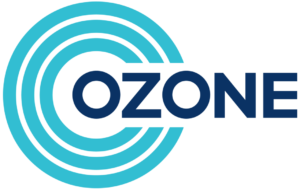by Anna Heatherly, publisher development at IPONWEB company, The MediaGrid
With big changes happening around identity and consumer privacy, the foundations of the programmatic ecosystem are shifting. But with big change comes big opportunity.
Given their close relationships to the end user, publishers are in a unique position to create value for marketers looking for new approaches to measurement, attribution, and addressability. As proof, supply access is once again becoming a source of competitive advantage and differentiation, with major agency buyers taking big steps to get closer to the supply-side.
All of this begs the question: how can publishers take advantage of the changing tides in programmatic? The following four points should serve as a solid foundation.
Data sharing and transparency
Media buyers rely on DSP partners to evaluate inventory and various paths to supply; these DSPs provide specific programmatic data sets (e.g., bid, win, loss, etc) to aid the development of unique Supply Path Optimization (SPO) strategies, with goals like reducing hops in the supply chain, driving better performance, and boosting transparency.
Publishers, through their SSP partners, are uniquely positioned to fill gaps in the data landscape, enabling greater transparency and collaboration with buyers by sharing insights about fees, clearing prices, bid density, and win/loss rates. Their buy-side partners can use these insights to supplement the data they receive from their DSPs to further optimize campaign performance and assess supply path efficiency.
Media buyers can also use the data to build new predictive models for funnel analysis, price optimization, and conversion intelligence. By providing select partners with the intelligence they need to boost optimization tactics and maximize the return on their ad spend, publishers can secure greater spend for them through volume deals or inventory and insights packages.
Supply-side intelligence
Publisher data can go a long way to supplement standard programmatic targeting, optimization, and measurement practices and help publishers further embed with media buyers. For example, within the identity space, publishers can work with advertisers to determine the ID solutions with the best coverage against their audiences and assess the impact of different ID solutions on key buyer metrics (bid rate, win rate, winning bid value, etc). This helps to deepen relationships with buying partners while providing insights into the value of the publisher’s audience.
Publishers’ insights about their content and audiences can also drive new targeting approaches that can offer more granularity and accuracy than many off-the-shelf solutions. This is particularly useful for publishers with high-value, niche audiences, who can package their inventory alongside contextual intelligence into taxonomy-fed deals. Packaging data with third-party supply into audience extension campaigns with the same level of granularity but without the challenges of scale, can drive new revenue for the publisher, additional reach for the advertiser, and relevance for the end user.
Brand value alignment
Publishers can also help media buyers to build supply strategies that align with core brand values, such as sustainability and DE&I priorities (a task not well suited to AI and data science just yet).
With in-depth understanding of their own audiences and editorial mission, publishers can work with agencies to identify and curate value-centered media packages. For example, an agency may want to align media buys for an advertiser promoting a women’s lifestyle brand with female-owned media outlets. Finding these signals on a major buying platform has only recently started to become possible, but still with no real standards for auditing or accuracy.
Publishers can help brands achieve their campaign goals – both metric and value-based – by aligning their inventory to the needs of their advertisers, building bridges in the process.
Innovative commercial models
Media buyers’ increased interest in closer relationships with media owners can be used by publishers to drive new commercial arrangements in exchange for access, exclusivity, and intelligence. New agreements that align the interests of both parties can be developed – such as swapping first-look inventory access, post-auction discounts, data sharing, measurement analytics, and reporting intelligence for larger spend commitments.
Publishers can enable agencies with innovative solutions, working with their data science and analytics teams to harness data insights and supercharge client campaigns. Media buyers should use their relationships with key publishers to secure inventory and data access to invigorate their SPO strategies.
Cementing key relationships now will pay long term dividends as programmatic influence leans once again toward the supply side. With unique access to users, publishers can provide media buyers with the targeting, measurement, attribution, and reporting that will be needed to thrive as the ecosystem evolves.









